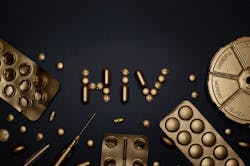The 2021 HIV Drug Resistance Report from the World Health Organization (WHO) reveals that in 2020, 64% of countries with a high burden of HIV infection had national action plans to prevent, monitor, and respond to HIV drug resistance.
These plans are informed by the Global Action Plan on HIV drug resistance 2017–2021, a multi-stakeholder plan coordinated and published by the WHO.
The WHO said it encourages countries to monitor resistance. When pretreatment HIV drug resistance (PDR) to non-nucleoside reverse transcriptase inhibitors (NNRTI), such as nevirapine and efavirenz, reaches a threshold of 10% for a surveyed country, the first-line HIV treatment should be urgently changed to a more robust dolutegravir-containing regimen, the WHO said.
The report indicates that an increasing number of countries are reaching the 10% threshold of PDR HIV drug resistance to NNRTI. People who have had previous exposure to antiretroviral drugs are three times more likely to demonstrate resistance to the NNRTI drug class. These findings emphasize the need to accelerate the transition to dolutegravir-containing regimens in countries that continue to use NNRTI-based antiretroviral therapy, the WHO said.
Since 2019, WHO has recommended use of dolutegravir as the preferred first- and second-line treatment for all population groups. It is more effective, easier to take, and has fewer side effects than other drugs currently in use. Dolutegravir also has a high genetic barrier to developing drug resistance, thus supporting its long-term durability and effectiveness. Since the surveys were implemented, many more countries have initiated transition to dolutegravir-containing regimens, providing people with a better treatment option and strengthening the fight against drug resistance.
The report also indicates that the number of countries achieving high levels of viral suppression (≥90%) increased from 33% in 2017 to 80% in 2020. Achieving high levels of viral load suppression in populations taking antiretroviral therapy prevents transmission of HIV, HIV-associated morbidity and mortality and prevents emergence of HIV drug resistance.

